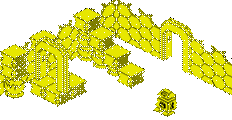Dragon 32 / 64
Vital Statistics
Introduced
1982 |
|
![]()
What's it like today?
|
The Dragon 32 was launched in August 1982 at a cost of £199. Dragon Data Ltd were a small company based in Port Talbot, Wales. Released around the same time as the Sinclair ZX Spectrum and Commodore 64 systems their new Dragon 32 faced some fierce competition.
The computer was almost a complete clone of the Tandy Color Computer TRS-80, also known as the "CoCo". They were based around the Motorola MC6809E microprocessor, which was a quicker, more capable processor than the older MOS 6502 and Zilog Z80 that the competition was using. But whilst computational power was good, Commodore's 64 and Sinclair's Spectrum outgunned the Dragon and Tandy computers with graphical capability. The Dragon computer got a parallel port that was missing on the CoCo, and it also had additional circuitry to allow it to work on Europen 625-line TVs rather than the 525-line US standard. Strangely, the Dragon was unable to display lowercase letters easily, which almost by default caused it to be a non-starter in the all-important educational market.
The Dragon 32 ROM holds the Operating System and a version of Microsoft Extended BASIC.
 The Dragon 64 was released about a year later. It doubled the RAM capacity to 64K, and also provided an RS232C serial port. An upgrade board was made available to existing Dragon 32 owners to upgrade their '32 to the '64. The '64 booted automatically into Dragon 32-compatible BASIC (as the main board contained two 16K BASIC ROMs, one holding a slightly modified version of Dragon 32 BASIC with the limitation of 24K of usable RAM, and the second holding a new BASIC that allowed 48K of RAM to be available to the programmer by copying the BASIC ROM into RAM.
The Dragon 64 was released about a year later. It doubled the RAM capacity to 64K, and also provided an RS232C serial port. An upgrade board was made available to existing Dragon 32 owners to upgrade their '32 to the '64. The '64 booted automatically into Dragon 32-compatible BASIC (as the main board contained two 16K BASIC ROMs, one holding a slightly modified version of Dragon 32 BASIC with the limitation of 24K of usable RAM, and the second holding a new BASIC that allowed 48K of RAM to be available to the programmer by copying the BASIC ROM into RAM.
Physically the two machines differed only in their outer case colour - the '32 was beige, whilst the '64 was light grey.
An enhanced Dragon 64 was being prototyped in late 1984, known as the 'Dragon Professional' (also known as 'Project Alpha' or 'Dragon Alpha'). This was likely to contain a built-in modem, AY sound chip, a disk interface with two 3.5" floppy drives, and would run Dragon's own flavour of either OS-9 or boot into Dragon 64 BASIC.
Despite the Dragon being one of the most technically advanced home computers of its time and achieving good sales in Europe the company had gone into receivership by 1985. When the Dragon stock was bought up by GEC, they took over control of the business and began to rebrand the machines as the 'GEC Dragon 32/64', This arrangement did not last long, however, before Dragon Data Ltd went bankrupt.











